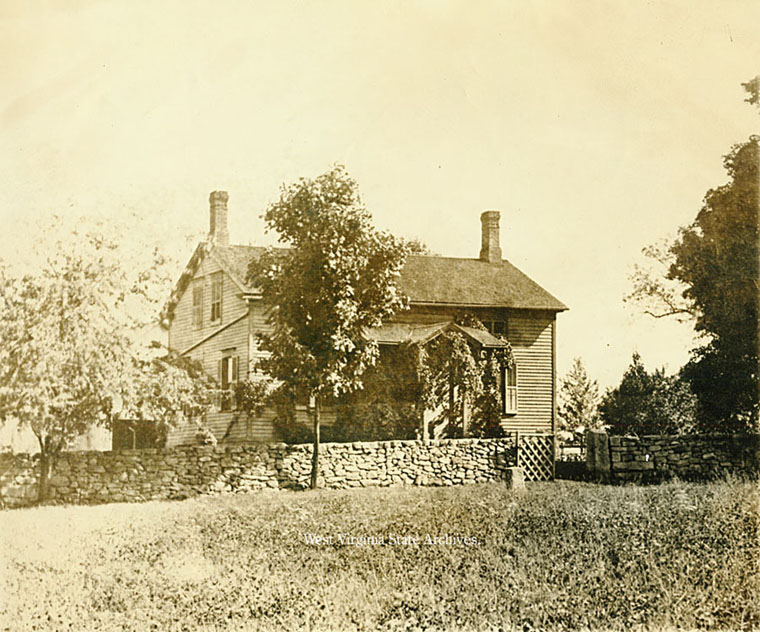



| In January 1844, John Brown entered into a partnership with Simon Perkins. Brown was to tend their flocks of sheep, and Perkins agreed to rent a frame house near his home in Akron, Ohio, to Brown. The firm of Perkins and Brown quickly acquired a reputation for the quality of its sheep and wool, as revealed by a comment by the editor of the Ohio Cultivator, a publication for Ohio farmers, in 1845: "too much cannot well be said in praise of these sheep, and especially in praise of the care and skill displayed by Mr. Brown." The Ohio Cultivator mentioned the firm on several occasions and published a letter from John Brown on a remedy for bots in sheep in 1846 and, as part of the proceedings of a wool growers' convention in Steubenville, Ohio, in 1847, a report by Brown on preparing wool for market. |  |
| "The farm was a mere recent clearing. The stumps of trees stood out, blackened by burning, and crops were growing among them, and there was a plenty of felled timber. The dwelling was a small log-house of one story in height, and the outbuildings were slight. The whole had the air of a recent enterprise, on a moderate scale, although there were a good many neat cattle and horses. The position was a grand one for a lover of mountain effects; but how good for farming I could not tell. Old White Face, the only exception to the uniform green and brown and black hues of the Adirondack hills, stood plain in view, rising at the head of Lake Placid, . . . Mr. Brown came forward and received us with kindness; a grave, serious man he seemed, with a marked countenance and a natural dignity of manner, . . ." - R. H. Dana Jr.,"How We Met John Brown [in 1849]," The Atlantic Monthly, July 1871, copy in John Brown Pamphlets, Vol. 4, Boyd B. Stutler Collection |  |
As the firm's failure unfolded, John Brown decided to move his family to a farm in the Adirondack Mountains in northeastern New York in 1849. Philanthropist and abolitionist Gerrit Smith had offered 120,000 acres of land there in 1846 for settlement by blacks, and Brown visited the area in 1848. A year later Smith sold him 244 acres in North Elba, a remote area at Lake Placid, after Brown proposed to "take one of your farms myself, clear it up and plant it, and show my colored neighbors how such work should be done; will give them work as I have occasion, look after them in all needful ways, and be a kind of father to them." (Sanborn, 97) The Browns moved to North Elba in June 1849.
The family stayed only two years, however. John Brown was there infrequently because he was forced to devote much of his time to the failing wool business, which was now beset by lawsuits. Faced with financial failure in Springfield, Brown moved the family back to Ohio in March 1851, where his sons could care for Simon Perkins's flocks. Only his now-married daughter Ruth remained in North Elba with her husband Henry Thompson. From the first, Brown saw the move as temporary, writing to Ruth and Henry about the farm and in 1853 sending instructions for building a house at North Elba. With the lawsuits finally settled by 1855, Brown brought Mary Ann and their younger children back to North Elba. The patriarch remained only a short time before embarking on a mission that would make John Brown a household name. |
 |
